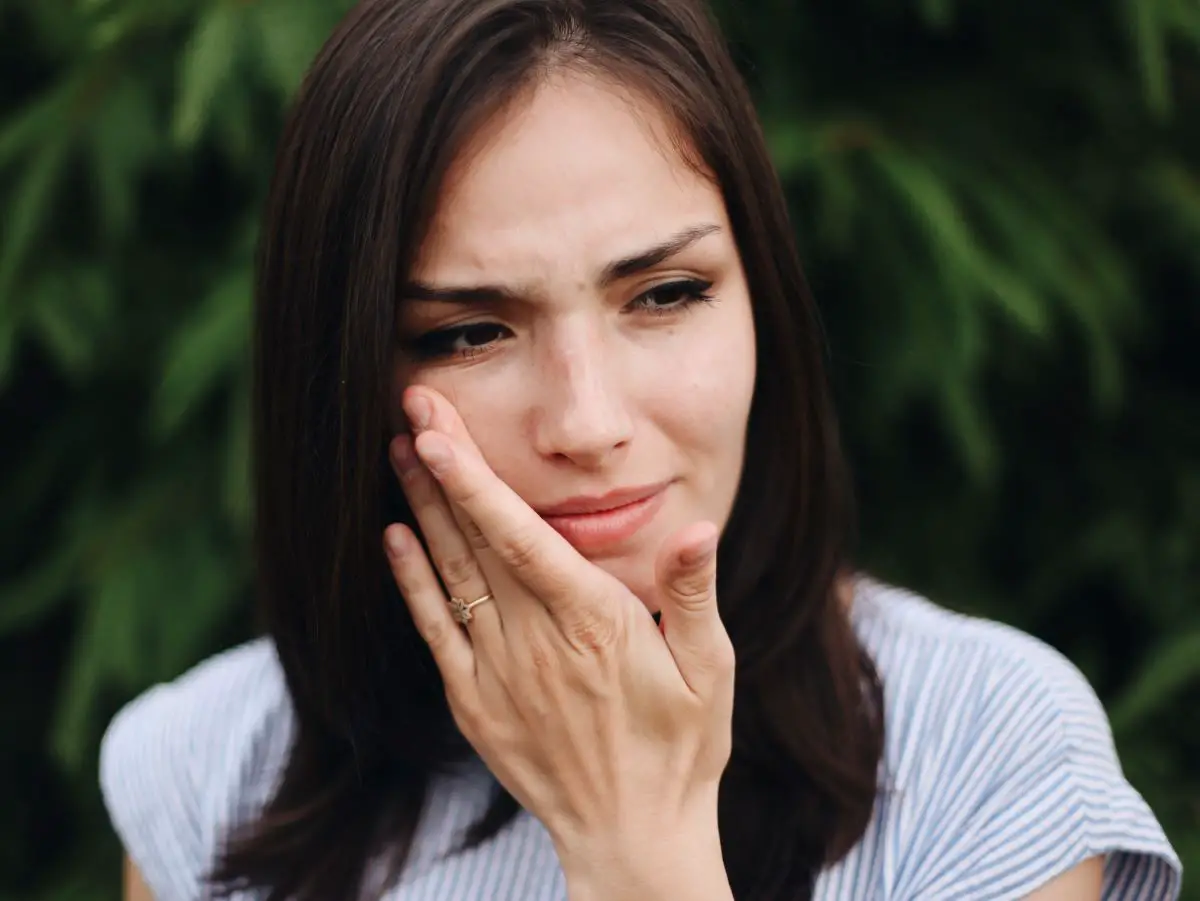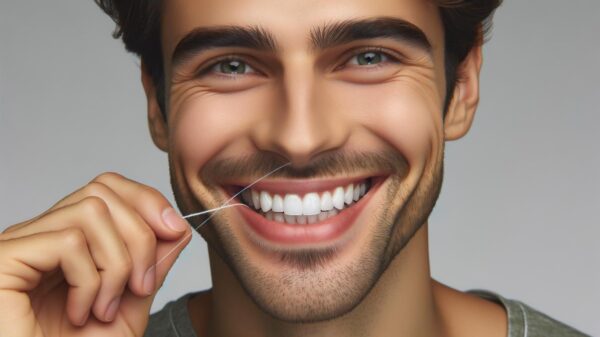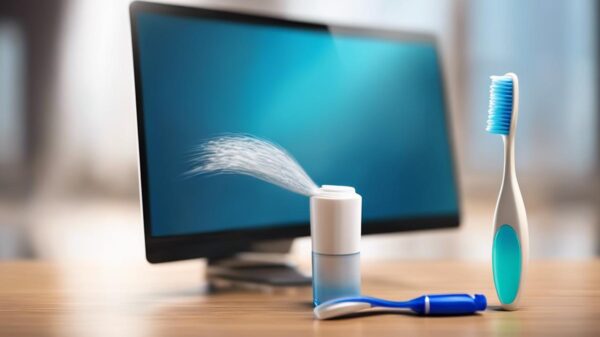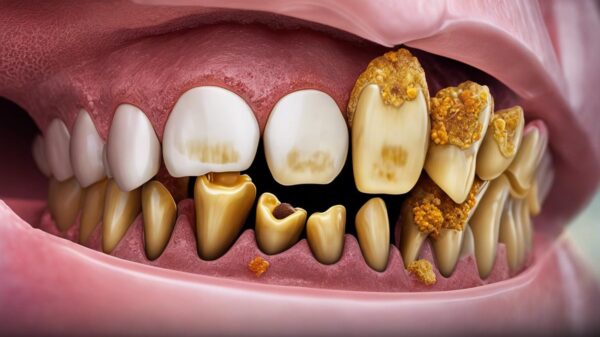What Causes Brown Spots on Teeth?
Your smile is something that is often taken for granted. However, many people don’t realize how much they are showing off their teeth each time they talk, laugh or smile.
Your smile speaks for you. The way you look when you’re happy or angry is portrayed through your teeth. The color and alignment of your teeth can leave a lasting impression on others, whether that is a good one or a bad one.
With this in mind, when you look in the mirror and take a look at your smile, the last thing that you want to see are brown spots replacing the pristine white surface that should be there.
So, why do my teeth have brown spots? Brown spots on the tooth surface are known as extrinsic stains that come from daily activities like drinking coffee or smoking cigarettes (which also darkens skin tone). This discoloration is usually gradual and can often be treated by a professional.
Keep reading to learn more about both preventing and getting rid of the brown spots on your teeth!

and on cheeks suffering toothache.
How a Healthy Smile Impacts Your Daily Life
Having crooked or large gaps between teeth can cause patients social anxiety because they are uncomfortable smiling fully during their day-to-day activities. When food particles get stuck between the teeth, they can cause bad breath and tooth decay. Without orthodontics to fix your smile or straighten your teeth, your smile may be marred by crooked, crowded, misshapen teeth that are difficult to clean properly.
Having a healthy smile not only improves how you feel about yourself but also affects others around you in a positive way. Orthodontic treatments allow patients to experience the benefits of having beautiful teeth while improving their overall health and happiness.
How Does Your Tooth Become Discolored?
The surface of your tooth consists of minerals such as calcium phosphate dissolved in an alkaline solution. The outermost layer, known as the enamel, protects the inner layers of your tooth from damage that could result in pain or infection. This enamel layer is transparent when it is newly formed and gets harder and more opaque over time.
For a tooth to become discolored, the minerals in the tooth must be broken down. This can happen with chemicals such as hydrogen peroxide or with bacterial acids.
As you consume different foods and drinks they interact with your saliva and leave behind residue on your teeth. Over time this buildup will cause stains to appear on your teeth.
Most foods that are acidic can lead to enamel erosion because they contain organic acids (see this post on fruit sugars vs sugar alcohols ). Acidic drinks like soda and juice can also cause teeth to turn yellow. To prevent this, avoid drinking sugary beverages with your meals!
Don’t Ignore the Brown Spots
They could be a sign of other issues, and it’s those issues that can cause bigger problems in the long run that may cause the dentist to have to go to more extreme measures such as surgeries or dental restoration.
Dentin is a major component of the dentin in our teeth. It forms the middle layer, which lies between pulp and enamel, and it provides structural support to protect against fractures.
If the outer protective coatings become damaged or worn away by excessive brushing or dental procedures such as scaling, then it may allow bacteria to infiltrate and infect the inner pulp tissue.
A common clinical sign of an infection in the pulp is bleeding gums when flossing your back teeth. This can be due to either excess plaque building up over time that irritates the gum line or also caused by inflammation from bacterial infections.
Tooth Discoloration Can Warn of Infection
If you notice discoloration on your teeth, then they’re also maybe some sort of infection that has started as a result of plaque or tartar buildup. The bacteria that cause such infections can produce pigments just like those found in food dyes, which will stain your teeth as they decay under the gums.
For example, if you drink red wine often and notice a brownish tinge along your gum line or see an overall light brown coloration across many areas of your tooth surfaces (especially back molars), then this may indicate you have had too much wine recently and thus caused some of the pigments in it to leach into your teeth and cause staining.
There can be other reasons for tooth discoloration, such as Tetracycline staining, where the antibiotic affects the appearance of primary (baby) or permanent teeth after use during childhood. This depends on how old you were when you received the medication and whether you took it long-term over years.
They may also be due to any sort of trauma that causes fractured or broken parts within a tooth that then leak blood and other fluids out into the surrounding tissue and gums, causing discoloration.
Another more common reason is aging itself, which brings us once again back to normal pigment changes associated with natural aging and the thinning of keratin layers. This can result in a yellowing of teeth, combined with a general darkening and staining of the gums over time due to aging.
 How to Treat Brown Stains on Teeth
How to Treat Brown Stains on Teeth
If you have braces or are planning to get them in the future, remove brown spots by brushing your teeth with whitening toothpaste. Make sure you use an ADA (American Dental Association)-approved fluoride toothpaste for maximum results.
You can also wipe out stains by using a lemon wedgie; slice half of a lemon and rub it on your tooth’s surface. The citric acid will dissolve any surface stains, especially if you brush the pulp off after the treatment.
You shouldn’t try to scrub away these stains because they’ll only get deeper into your enamel (the hard outer shell of your teeth made from calcified minerals). If you want whiter teeth without lightening them significantly, get rid of surface-level stains by drinking lots of water and using a daily mouthwash.
Professional Tooth Whitening
Many people want a whiter and brighter smile, so teeth whitening products are an extremely popular cosmetic dentistry option. Whitening toothpaste and strips can be bought over the counter without a prescription or dentist’s recommendation, but these products typically work slowly.
The best way to get your teeth near-instantly white is with professional in-office bleaching procedures performed by a dentist. However, some patients aren’t completely satisfied with the results of their in-office treatment because they experience temporary staining after bleaching. Here are three common reasons why this happens:
Temporary Dehydration of the Teeth
When bleaching chemicals are applied to the surface of the teeth for an extended period, some water content may evaporate out of them. This can give your teeth a more brittle, dry appearance for up to 24 hours after the process has finished.
2. Irritation of the Gums
Bleaching chemicals are highly acidic (pH of 1-3), and prolonged exposure to them may irritate the tissue in your gums. If this happens, they will become more susceptible to bacterial infection, swelling, bleeding, and color changes. This is what causes most cases of temporary gum irritation, but sometimes it’s caused by an allergy or chemical burn from the whitening solution itself.
3. Discoloration of Dental Restorations
Dental crowns, veneers, inlays, onlays – any type of dental restoration can turn slightly greyish-brown when exposed to bleaching chemicals. This is only temporary, though; after 24 hours, the brightness of your crowns and fillings should return to normal.
Visit a Dental Professional
You can look after your teeth at home, but visiting dental professionals when you notice any changes to your mouth is important. A routine check-up will involve a professional cleaning your teeth and examining your entire mouth.
They may recommend other tests such as x-rays or periodontal exams which can determine if you have periodontitis or need root canal treatment. It’s important to visit the dentist for regular teeth cleanings so that plaque and tartar can be removed from your mouth.
If left untreated, these two conditions can lead to gum disease which is not only painful but could cause serious health problems too. In addition, yellowing of the teeth, bad breath, and even tooth loss can occur if better oral hygiene isn’t practiced daily.
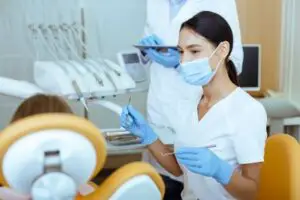 Final Thoughts
Final Thoughts
You know some possible reasons for those brown spots, and you know that there are many benefits to looking after your teeth. Not only can you avoid pain in the mouth and expensive dental treatments, but you will also enjoy a higher quality of life.
As more plaque is removed from the teeth, more oxygen can get through which promotes general health among other things. Invest in your smile by making sure that the condition of your teeth improves each day.



